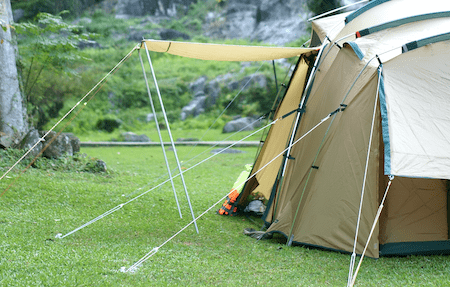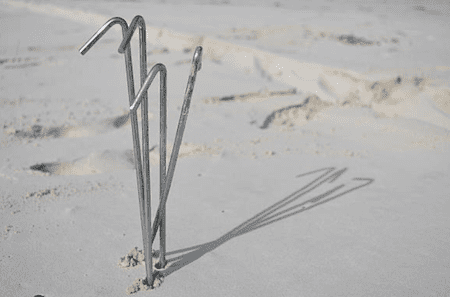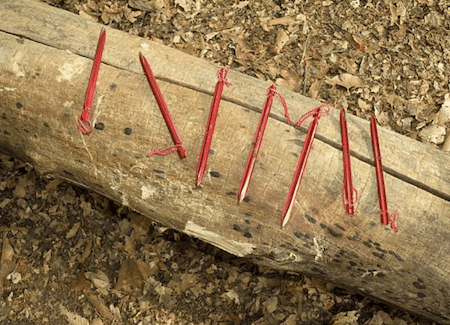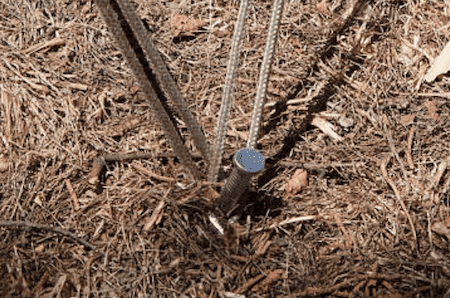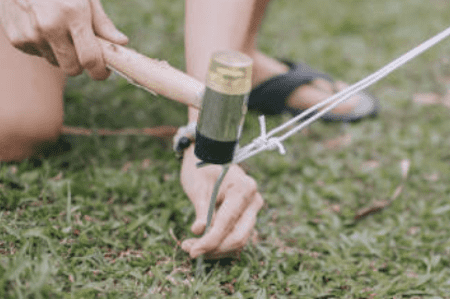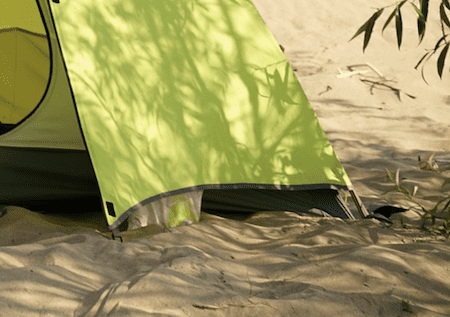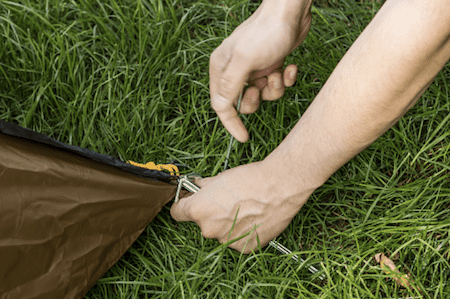If you enjoy traveling, it’s likely that you’ve thought about camping along the way.
While planning a camping trip, you may want to be sure knowing, “do tents come with stakes?”
If you’ve ever gone camping, you’ll know how difficult it is to set up a tent.
Generally speaking, most tents come with stakes, but it’s always a good idea to check ahead of time.
You’ll also need to know a few more details to determine if tents come with stakes or not.
We briefly addressed the question, “Do tents come with stakes?” in this article.
To learn more, take your time and read this article. This post will give you precise information on tent stacks.
What Are Tent Stakes?
Tent stakes are also known as tent pegs. Usually, stakes are like a hook that has a hole at the end of the top.
Stakes are made from several things such as metal, plastic, wood, or composite material.
You have to push the stakes onto the ground to hold your tent on the ground, you should connect the tent rope with the stakes.
A tent stake is traditionally made from a length of a tiny tree branch, preferably with a little side branch chopped off to provide a hook, and hammered into the ground thinner end first.
The tent stakes have a different design that is hammered into the ground at a 45° angle around the tent’s perimeter.
The amount of tent stakes needed varies depending on the tent’s size, although most tents have dual nylon stake hooks at each corner as well as midway on each side.
Do Tents Come With Stakes?
The simple answer is “yes”, mostly stakes come with a tent.
However, when you are planning to go out and buy more stakes for your tent, double-check to see if your tent already has them.
You should look at your tent’s description, and product photos, check the reviews or contact the manufacturer to confirm.
Stakes can be purchased separately if your tent somehow doesn’t come with them.
Maybe you don’t need them if you’re camping in nice weather.
Before buying extra stakes make sure where you are going to camp and get proper knowledge about your camping place.
Types Of Tent Stakes
Four types of tent stakes are available in the market which are shephard hook stakes, groundhog stakes, v-shaped stakes, and nail stakes.
In this part, we will discuss them.
Shephard Hook Stakes
Steel Shephard hook stakes are included with almost every tent on the market.
Manufacturers of tents try to get away by using the cheapest stakes they can locate.
These are typically 6′′ steel pegs weighing around 4+ oz each. Given that MSR’s Shephard Hooks weigh.45oz only, this weight is absurd.
Naturally, more costly tents have better titanium stakes, but still, you can do better with this one.
You will get two benefits by using Shephard hook stakes which are cheap price and lightweight.
Groundhog Stakes
Groundhog stakes have the best penetration and hold the most weight.
The stakes will not be damaged if you pound all day. They’d be wonderful if it weren’t for the extra weight.
Groundhog stakes weight is approximately .460z which is double of Shephard stakes.
Although the hold and simplicity of usage are good for it, they are quite heavy.
That’s why for increased stability you can use two groundhogs in front and back, they will give you extra strength.
V-Shaped Stakes
V-shaped stakes are much heavier than groundhogs, shephard stakes but operate well although they keep dirt in place.
Without a doubt, it’s a deal-breaker. Some people despise having to scoop soil from every hole before repacking them.
Using V-shaped stakes is tough but they hold up well and they are rather lightweight. The grooves appear to boost grip and make them lighter.
Be careful while hammering them in. When you hammer the tops into hard ground, they tend to bend over.
They ultimately break off after a couple of short bends.
Nail Stakes
Nail stakes strengthened the top so it wouldn’t bend.
They’re a lot lighter than the aluminum they’re replacing, and they hold up significantly better. The weight loss and improved performance are well worth it.
Don’t be stingy with your nail stakes! Stake failure is a recipe for small, cheap, and light stakes.
How To Use Tent Stakes
The best way to set down tent stakes differs based on the type of surface you’re working with.
So, depending on the type of soil you’re pushing the stakes of a tent into, there is a method that practically works.
Let’s see the ideal way to use them.
Dirt Or Grass
This one is normally the easiest soil type that helps to stake in and keep them in place.
You just need to push them by hand or foot. If the soil is hard but rocks are avoided then a rubber mallet or a piece of wood can be used to gently get them in. It doesn’t need too much effort.
Try to ignore using Stones for hammering your stakes, it can damage your stakes.
It’s really painful to get broken stakes. You should use a rubber mallet, it works quite well. It won’t harm your stakes.
Soft Soil Or Sand
This is the simplest type of soil to stake a tent in.
On the other hand, this type of soil has the least percentage of holding power.
When you require extra holding strength, this isn’t the best option. You must have specialized stakes for sand.
There’s another method that can help you when you’re on the sand (staying a night or two after beach trekking).
For example, drill deeply using your hand before you come to a thick, sticky layer. Stakes that are placed on such layers are more able to hold.
Snow And Frozen Ground
In the winter period, the depths of the snow will identify how you secure your tent with tent stakes.
When you have bare ground, you’ll need to use the nail stacks because it’s too tough to work with soil that is frozen.
The reason behind this is the hardness of the surface, tent stakes need to get enough depth in the soil.
Rocky Ground
Thin shepherd’s hooks and nail-style stakes could be efficient, especially when there are enough rocks in the soil.
Because they are suitable to fit in here between stones. In order to figure out the openings among rocks, twist the shepherd’s hook back and forwards.
You can still use those rocks to help secure your tent if they are too big to set a peg of the tent into the ground.
Now it’s time to add the guy line to the center point of the peg and then weigh it with a small number of rocks.
Importance Of Tent Stakes Angle
Choosing the right angle to set up your tent stakes is extremely important.
Your tent’s support system will be less effective if the stakes aren’t inserted at an angle into the ground.
Tent stakes need to be positioned a little far from the tent so that the line pulls perpendicularly from the stakes’ shafts.
It is possible to set the stacks at a 45° angle from each corner of the tent, and the line can be tightened so that the inside space is the most.
The same rules apply when erecting the tent’s mainframe.
How To Make Your Own Tent Stakes?
Find several 15cm-long skewers which can use as lightweight tent stakes.
The tent stakes must be set up apart from the tent. To preserve the tent from damage, choose another bag to construct the tent stacks in.
Use elastic ropes to connect the end of the tent wires to the tent pegs, which will effectively limit winds on the roof.
To properly anchor a tent pitched on sand or snow, attach a line to a bag of sand, stone, or stick while sinking it in the sand and snow.
Question & Answer Section
What Can Be used Instead Of Tent Stacks?
As a replacement to tent stakes, you can use any tough, sharp long stick.
Instead of tent stakes, insert a screwdriver, or metal sticks, long wooden sticks through the loop.
Please keep in mind that these items will only be useful in an emergency. Any alternative to tent stakes won’t give long-term support.
How Many Stakes Needed For A Tent?
The minimum amount is four. To set up a tent, you’ll need four stakes, even if it’s a small one.
For further protection, some tents have extra hooks in the center of all four bottom sides.
Furthermore, if you’re using a rainfly, you’ll need extra pegs to keep it in place on the soil.
Conclusion
Tent stakes are something that no one worries about, but if you don’t really have them, your day will be ruined.
To get the most out of tent stakes and avoid the chance of breaking them, learn how to use them properly, just like any other piece of gear.
When you have the correct tent pegs and know about using them, you can reduce the chances of your tent taking off on its own due to a gust of wind.
Hoping now you have enough ideas on ‘do tents come with stakes?’ as well as your confusion is clear right now.
Enjoy your camping and be safe while camping.

